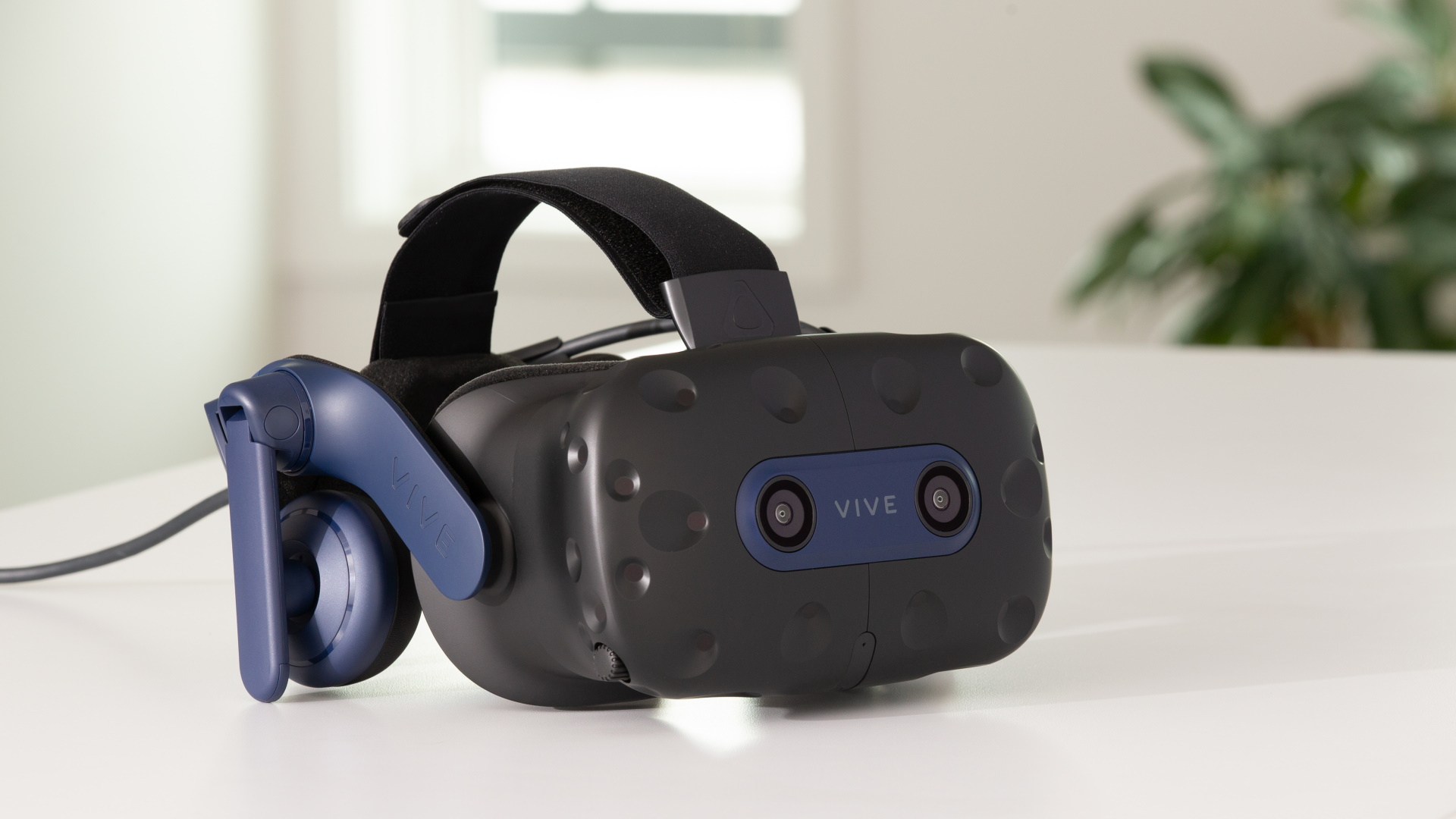Our Verdict
The awesome 5K display gives VR a new lease of life, but the HTC Vive Pro 2 is really only viable as an upgrade for existing VR advocates.
For
- Awesome display
- Precise tracking
- Mature platform
Against
- Ridiculously expensive
- Takes time to setup
- Gets hot in use
PC Gamer's got your back
The HTC Vive Pro 2 is the latest high-end VR solution to hit our PCs. This comes hot on the heels of the HP Reverb G2, another high-end solution for tethered VR. So here we are once again, throwing ourselves various virtual worlds to see if incremental hardware improvements are the answer to the assault from the ridiculously affordable and incredibly easy-to-use Oculus Quest 2. Can HTC's newest headset do enough to make into our guide for the best VR headsets? It's time to find out.
Display: LCD
Resolution: 5K (2448 x 2448 per eye)
Refresh rate: 120Hz
FoV: 120 degrees
Tracking: Base Station 2.0
Controllers: HTC Vive
Audio: Off ear, integrated
Cable length: 5m (16ft)
Inputs: USB 3.0, DisplayPort 1.2
Price: $1,399 (£1,299)
The big improvements for the Vive Pro 2 are all on the display front: with an increase in the supported refresh rate up to 120Hz, 120-degree field of view, and a serious bump in the display resolution up to 4,896 x 2,448 pixels. That makes it one of the highest resolution mainstream headsets you can drop your money on and offers a significant edge over the Oculus Quest 2 as well, which settles for 3,664 x 1920.
In use, this makes for a notable uplift in clarity and sharpness, with the likes of Half-Life: Alyx being an even more incredible world to jump around in. It's a less obvious upgrade in more cartoony titles, meaning you really need high-resolution textures and models to truly enjoy the benefits this headset brings.
There's absolutely no obvious screen door effect anymore either, and in fact, at this resolution, it feels like the hardware side of VR has been solved. We may get higher resolution displays in the future, and tweaks to the lenses, but the differences such advances make will be subtle if even noticeable at all.
You will need a high-end machine to get the most from this headset though, with HTC recommending an Nvidia GeForce RTX 20-series or Radeon RX 5000-series GPU to maintain a smooth experience. For testing, we hooked up the headset to our high-end test PC, which is home to a GeForce RTX 3080 and an AMD Ryzen 9 5900X. We had no problems running any of the games on this setup.
The HTC Vive Pro 2 is very much a tethered experience by default still, and while the cable that connects you to your PC is generous, there are still times when it gets in the way and yanks you out of your virtual world. If you pine for cable-free gaming, then the headset is compatible with the HTC Vive wireless adapter, but that costs an extra $349 (£359) and also limits the refresh rate to 90Hz—not exactly ideal.
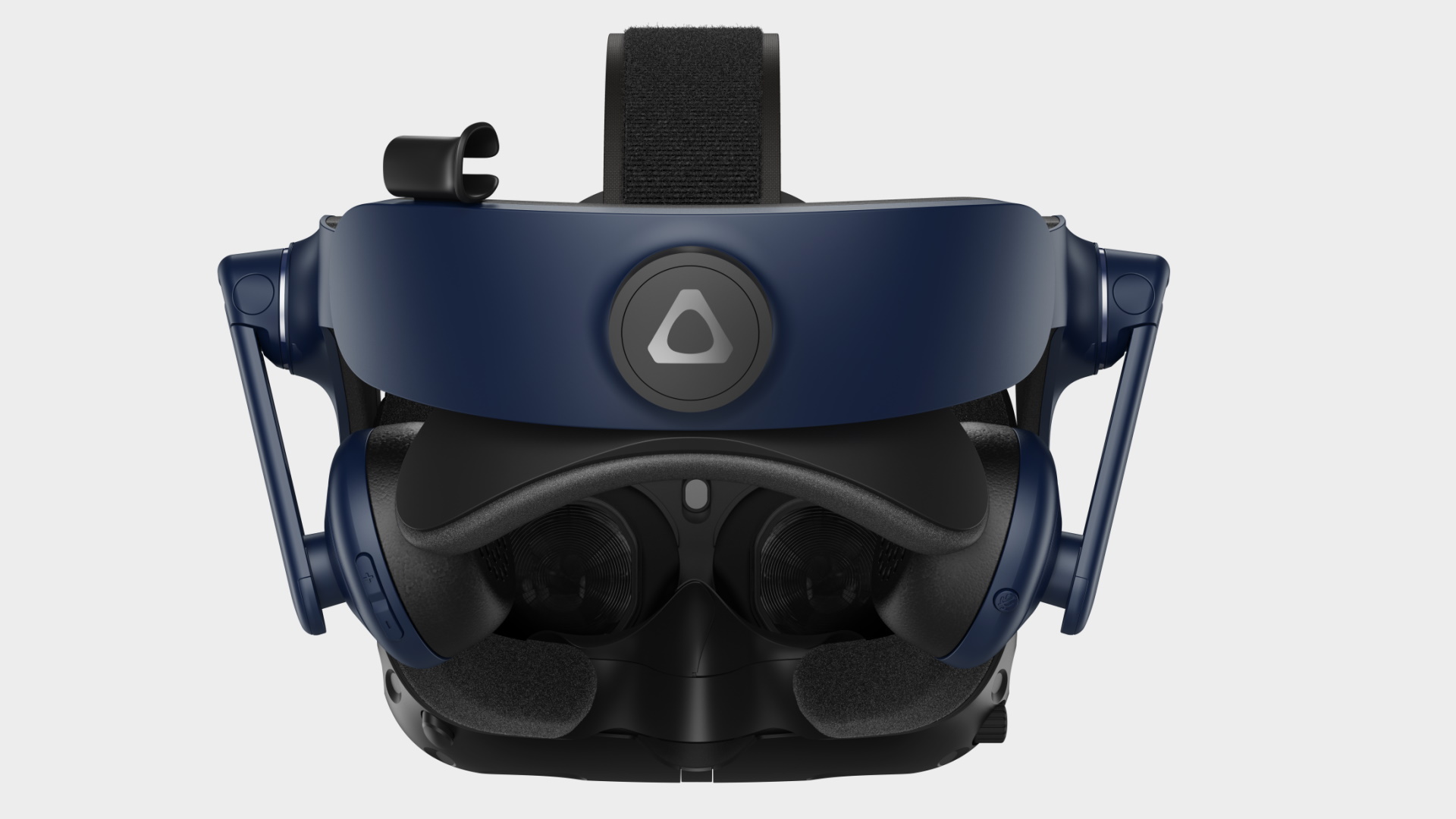
HTC has stuck with the satellite setup for this headset to ensure you get accurate controller tracking, which means you'll need plenty of plug sockets to get everything up and running. The full kit comprises the headset, two first-generation controllers, and a pair of Base Station 2.0 satellites. The headset is available on its own as well, which is useful if you're upgrading from a first-generation setup. That full-kit costs a surprisingly pricey $1,399 (£1,299), while the headset on its own will set you back $799 (£719)
Setup is still a bit of a pain, and requires mounting the satellites in a way so that they're not bouncing around in response to your own virtual shenanigans. They come with wall mounting brackets, which is probably the best solution. You'll need to place them near power sockets too, as each satellite needs plugging in, and you'll need an extra socket for the headset breakout box too.
It's not plug-and-play is what we're saying.
The software side of getting the Vive Pro 2 up and running is handled by HTC's setup app, which goes through the proceedings in a logical way before handing over control to Steam VR for the final configuration. This works well and highlights any issues as you go.
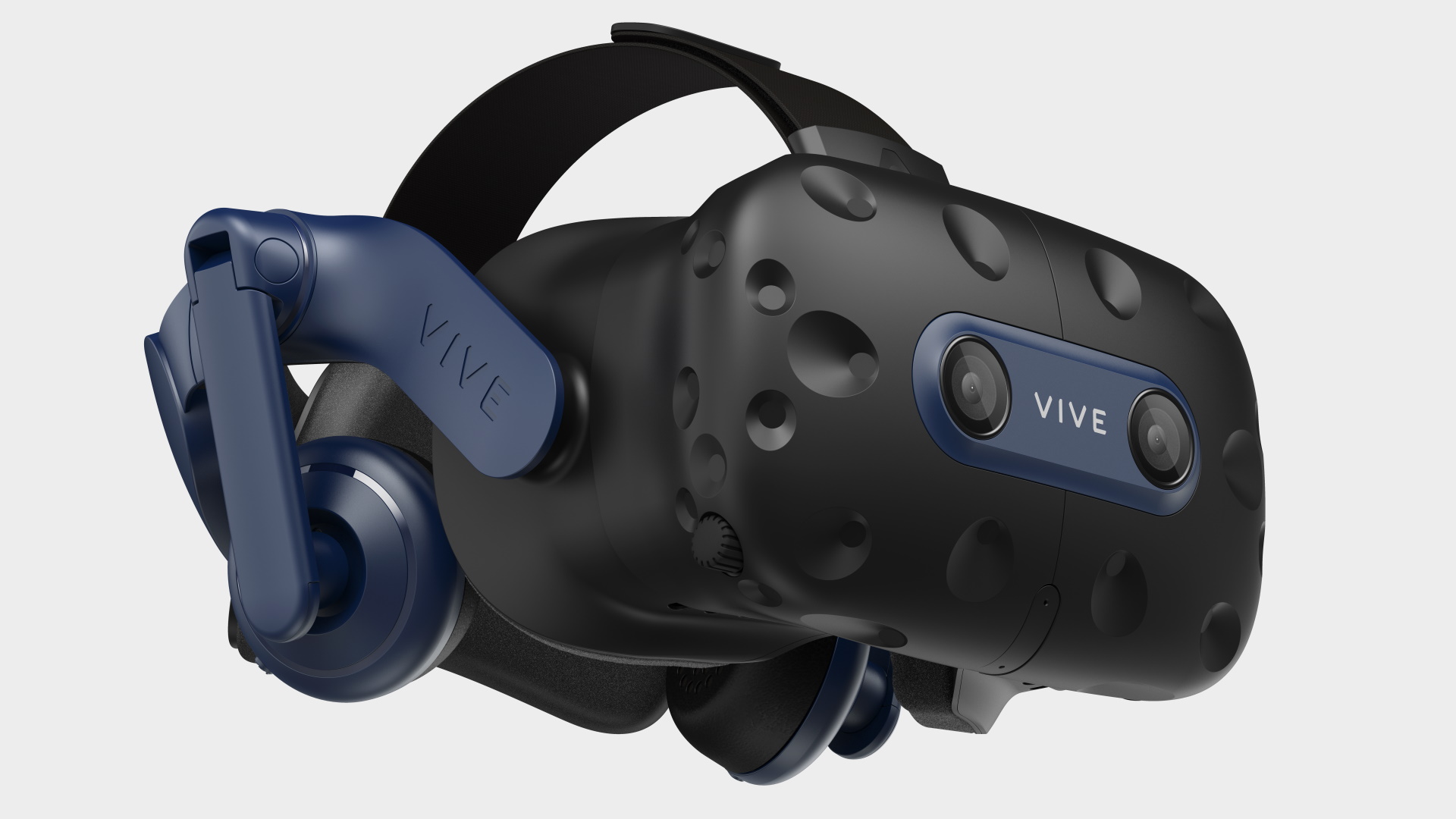
The HTC Vive Pro 2 does have built-in cameras that can be useful for spotting hazards (or people) when gaming and the outline effect isn't as game-breaking as you might think either. It's a useful inclusion unless you have a big enough space to use the headset without the danger of bouncing off furniture.
The first-generation controllers are fine. There's not a lot more to add to that. Given the Valve Index has smarter controllers, and even the Quest 2 has made advances on this front, it feels like HTC has given up a bit on the input, but they are compatible with plenty of games and are easy to use—although can get tiring in marathon sessions, especially where you have to grip things for long periods.
The headset itself is comfortable to wear, although I did find myself getting hot after a while. There's plenty of foam padding to help keep things comfortable, although this acts as an insulator as well—not something you particularly want whilst dodging bullets. It's not the lightest headset around, but it is really well-balanced, and so doesn't feel overly heavy.
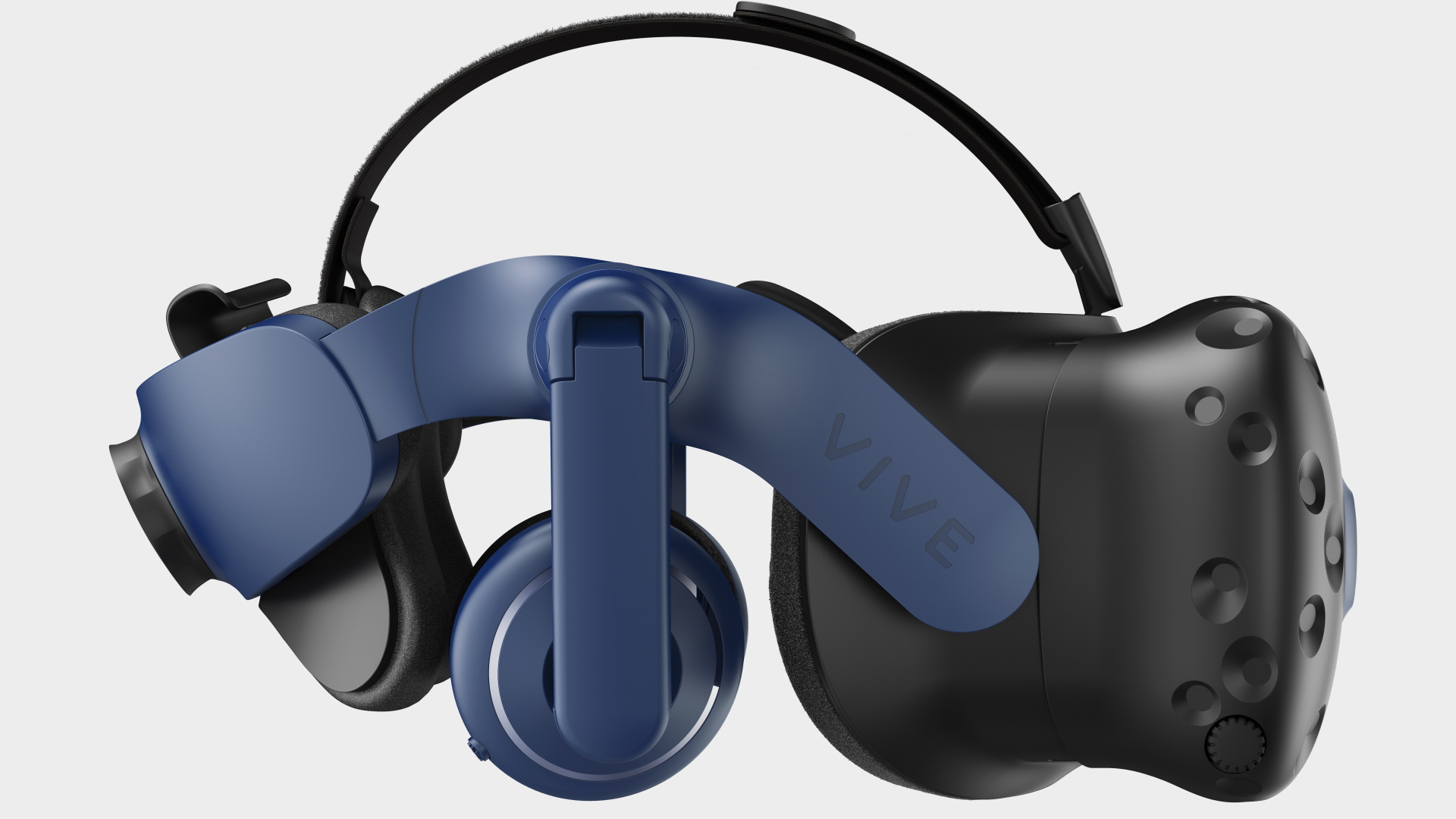
The HTC Vive Pro 2 comes with two free months of VivePort Infinity membership—which basically gives you access to more games and demos than you'll ever have time to try out. It isn't easy finding genuinely decent games to play. It's almost like having access to over 2,500 titles makes things worse, not better. Believe me, there is a serious amount of dross in that list, and good games do not naturally rise to the top.
The HTC Vive Pro 2 does a good job of highlighting how far VR has come in the last few years, however, and this really is a premium piece of VR hardware. If you're already heavily invested in VR and want to make sure that you've got a headset that can bring you a premium experience, then this is an impressive option. You will need a beefy machine to get the most from it, but that's pretty much a given for any serious high-end VR these days.
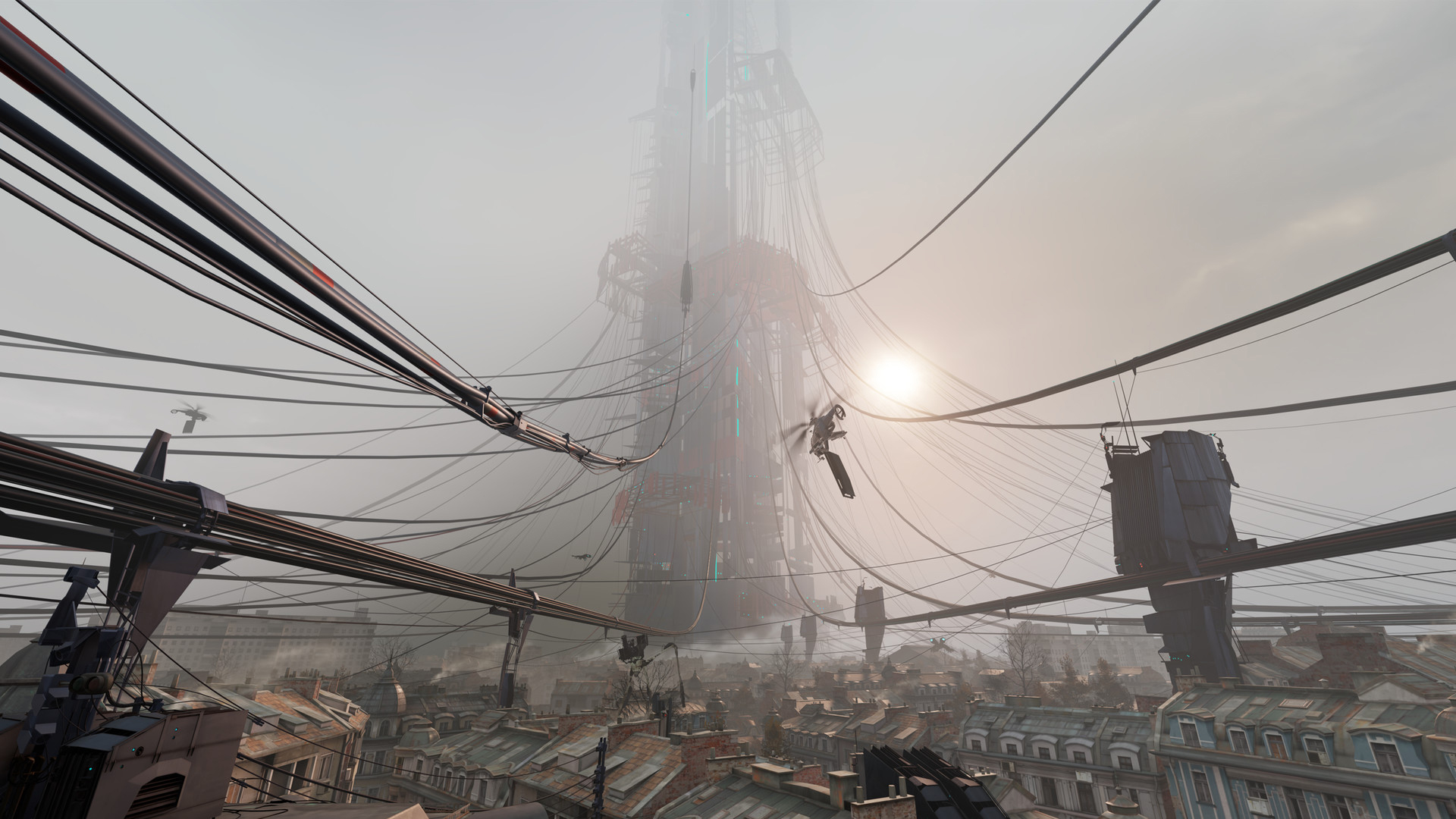
The real problem I have with VR is on the games front. There simply aren't enough great games out there. Sure there are plenty of brilliant little experiences, but having seen what is possible with a massive team and budget in the form of Half-Life: Alyx, everything else just feels a little basic by comparison. And without the titles to make VR sing, it feels like there's not really a good enough reason to drop so much money on a decent high-end headset. And this absolutely is more than a decent offering.
Then there's the ongoing problem for high-end PC VR that is the Oculus Quest 2. The Quest 2 may not quite have the accurate tracking that a base-station solution like this has, and it can't quite compete on the resolution front either—although it really isn't far off. The biggy here though is the price: the Quest 2 is significantly cheaper than this and that inside-out tracking means that it is much easier to just pop on for a quick play, as opposed to digging out your base stations yet again.
All this means the HTC Vive Pro 2 is a great option if you're looking for a premium PC VR gaming experience. It's not for those just looking to dabble in the technology though, and with the likes of the Quest 2 being good enough for the vast majority of games, it's a tough sell on HTC's part to make that big scary price tag make sense.
The awesome 5K display gives VR a new lease of life, but the HTC Vive Pro 2 is really only viable as an upgrade for existing VR advocates.
Alan has been writing about PC tech since before 3D graphics cards existed, and still vividly recalls having to fight with MS-DOS just to get games to load. He fondly remembers the killer combo of a Matrox Millenium and 3dfx Voodoo, and seeing Lara Croft in 3D for the first time. He's very glad hardware has advanced as much as it has though, and is particularly happy when putting the latest M.2 NVMe SSDs, AMD processors, and laptops through their paces. He has a long-lasting Magic: The Gathering obsession but limits this to MTG Arena these days.
